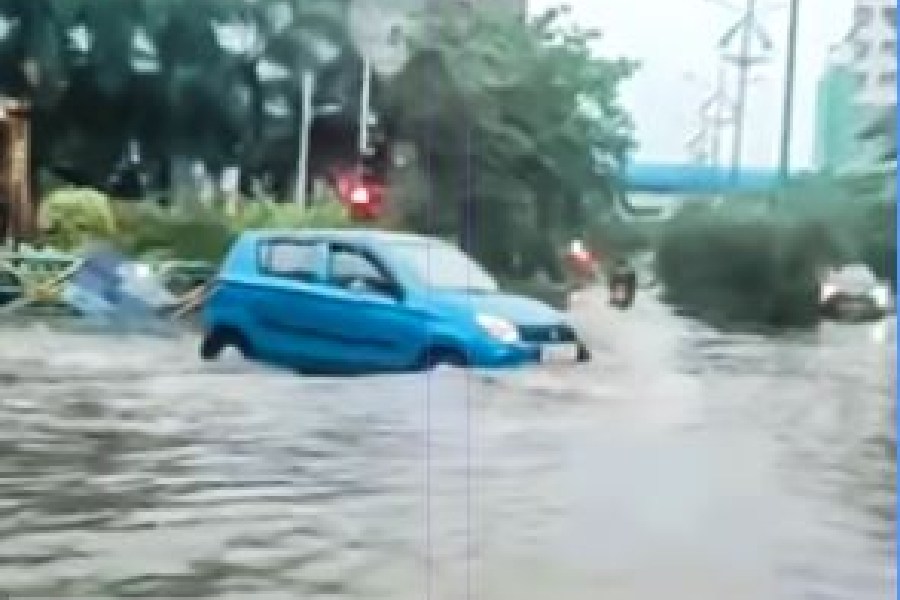Many New Town pockets got waterlogged after Monday morning’s spell of rain.
The areas that got submerged under ankle- to knee-deep water included stretches of the Major Arterial Road — a 10.5km-long six-lane artery that connects New Town with Salt Lake on one side and the airport on the other.
The stretch of the Major Arterial Road Extension, in front of the Rosedale Complex, remained underwater for nearly 40 minutes after the rain had stopped.
The streets and lanes of multiple residential blocks in the township’s Action Area I — including BD, AB and AC — got waterlogged, too.
Anupam Ghosh, a resident of New Town’s Action Area I who was heading towards Rajarhat and was travelling in his car, said the hatchback had to struggle while negotiating the waterlogged stretches.
“As I was driving I could feel the car struggle while moving through the water. Every time a larger vehicle like a bus overtook me, the car shook. Luckily, I made it to Rajarhat, but there, too, the roads were flooded. I stopped the car for nearly an hour to let the water on the road recede before resuming my journey,” said Ghosh.
Parts of Salt Lake, including the Karunamoyee intersection, one of the busiest crossings in Salt Lake, were flooded.
Streets in Sector V, too, were waterlogged at multiple places for at least an hour after the rain stopped.
An engineer of the New Town Kolkata Development Authority (NKDA) said they had undertaken a drive to clean drainage channels and gully pits so rainwater could drain out fast.
“During the cleaning process, we removed everything from construction waste to plastic bags and sanitary pads. Despite sending out regular notices to builders, residents and owners and operators of pavement stalls, a section of people keeps dumping waste into rainwater drainage channels and gully pits,” he said.
Despite regular cleaning, the drains tend to choke up once fresh plastic items such as bags are dumped into it.
“Dumping of construction waste and water runoff from building sites is also emerging as a big challenge for us,” said the engineer.
Another official of the NKDA said teams were deployed as soon as the rain started to drain out water from roads, but the rate of the removal failed to keep up with the intensity of the rain.
“We had received a high volume of rain in a short span of time — around three hours — because of which it took some time for the water to drain out. We decided to deploy teams today to once again clean all gully pits and drainage channels,” said the official.
